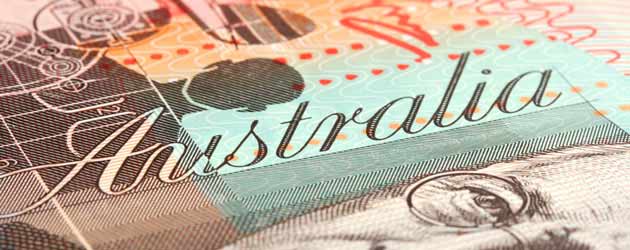
The Australian Dollar was one of the few currencies to have dodged the impact of the recent bullish run of the US Dollar. On Thursday the ‘Aussie’ (AUD) has continued its surge versus the majority of its major peers following better-than-anticipated Private Capital Expenditure data.
The Australian Dollar to Pound Sterling is currently trending in the region of 0.5639.
The ‘Aussie’ has experienced a bullish run versus most of its major peers over the course of the week. Having avoided the dominance of the US Dollar; the upward ‘Aussie’ surge began on Tuesday with an improved weekly consumer confidence publication. The Roy Morgan Weekly Consumer Confidence Index rose to 113.5 from the previous week’s figure of 112.5.
The Australian Dollar has also benefitted from a softening ‘Kiwi’ (NZD). The New Zealand Dollar has experienced waning demand over the course of the week having posted some disappointing economic data results and from the backlash of falling dairy prices.
Despite a less-than-impressive construction publication on Wednesday, the ‘Aussie’ held strong against many of its peers. Second quarter Construction Work Done was expected to contract by -0.5% but the actual result revealed contraction of -1.2%.
The poor construction result would have had more impact had it not been for the waning demand for the US Dollar. As traders locked in profits ahead of the US Gross Domestic Product data due on Thursday, the demand for the ‘Aussie’ heightened. This is perhaps because it already held a strong position, but also could be related to last week’s assurances by Reserve Bank of Australia Governor Glenn Stevens, who stated that he was not willing to drop interest rates to boost their economic standpoint.
The Australian Dollar to Pound Sterling exchange rate has hit a low today of 0.5626.
The Pound Sterling has had less to celebrate this week having had very few domestic data publications to divert the current downward trend.
As the Scottish bid for independence continues to rouse debate without any clear direction, sentiment towards the Pound has waned considerably.
The Pound also felt the strain from a set of less-than-ideal Eurozone domestic data publications. Given the strong trading bond between the Eurozone and the UK the negative data has had a lasting effect on Sterling.
The Pound has, however, benefitted from the recent softening of the US Dollar as traders buy their profits ahead of some influential market moving US data due for publication later on Thursday.
Thursday has seen the Australian Dollar gather yet more momentum after a positive domestic data publication. Private Capital Expenditure has seen a second quarter growth of 1.1% despite having been forecast to retract by -0.9%. The exceptional result has overshadowed a dramatic retraction seen in home sales. New Home Sales declined by -5.7% having shown previous growth of 1.2%.
Sterling has held relatively steady on Thursday as those invested in the Pound await the Eurozone data due for publication later in the day.
UPDATE
The Australian Dollar to Pound Sterling exchange rate has held steady on Friday after better-than-expected consumer confidence curtailed Sterling’s downward trend.
The UK GfK Consumer Confidence Survey was predicted to retract by -1 having shown a decline of -2 previously. The actual data revealed a surplus result of 1. With nothing by way of economic data for the rest of Friday the Pound is likely to strengthen versus the majority of its major peers.
Friday’s Australian domestic data is of little consequence to wider market movement but may explain why the bullish run has reached a plateau. Year-on-year Private Sector Credit stayed faithful to the forecast of 5.1%, but the monthly Private Sector Credit fell below expectations printing at 0.4% for July.


Comments are closed.